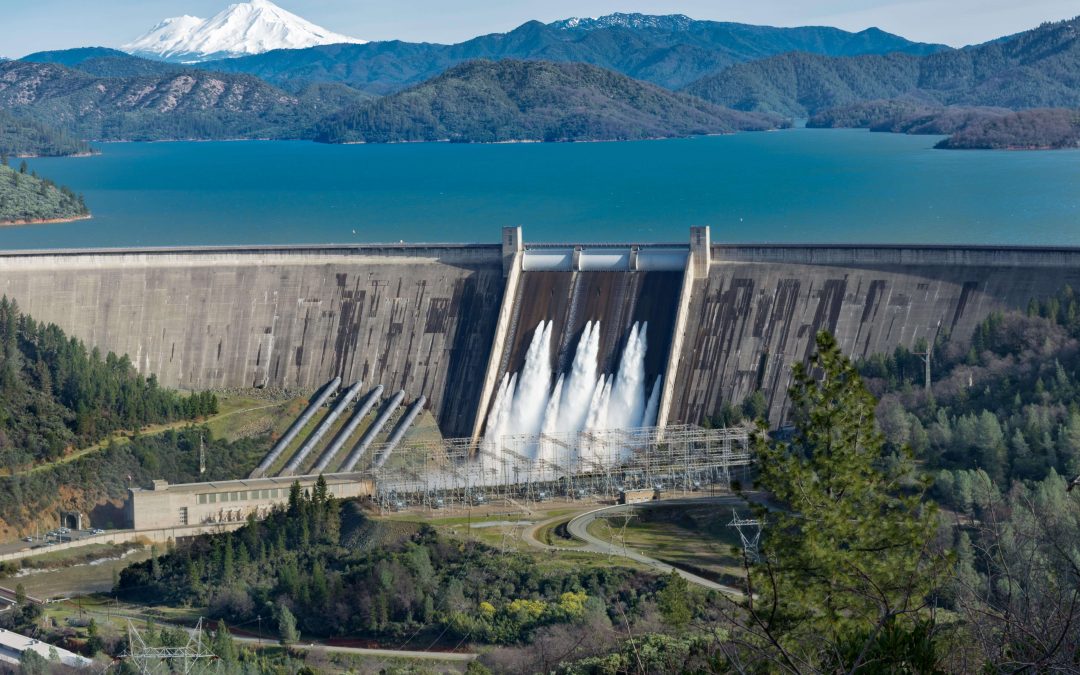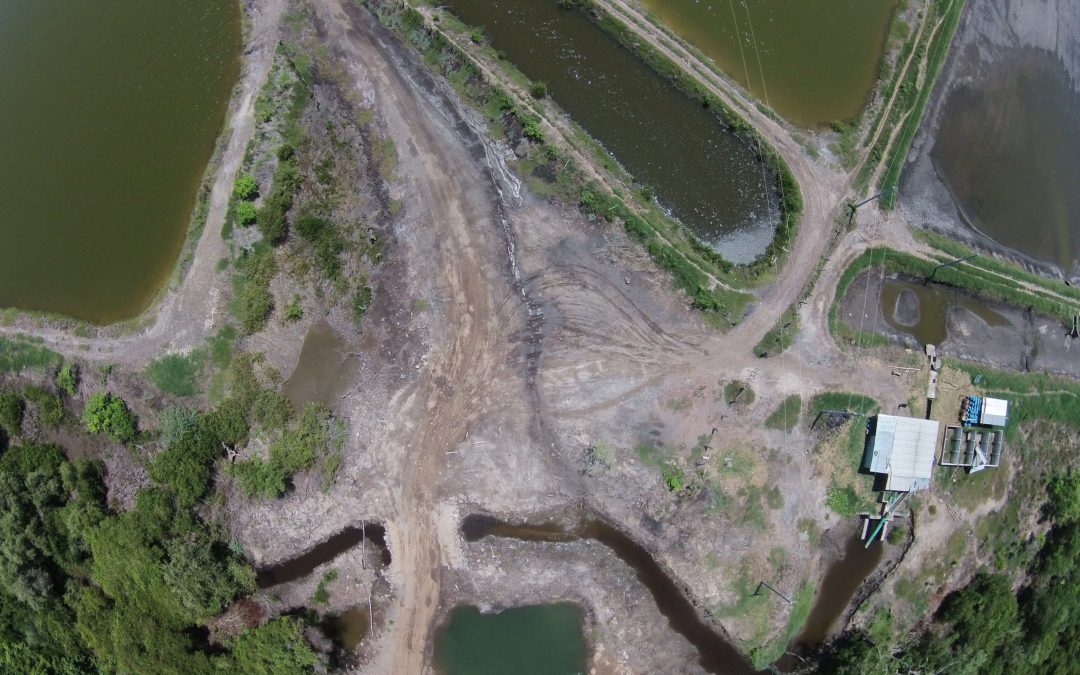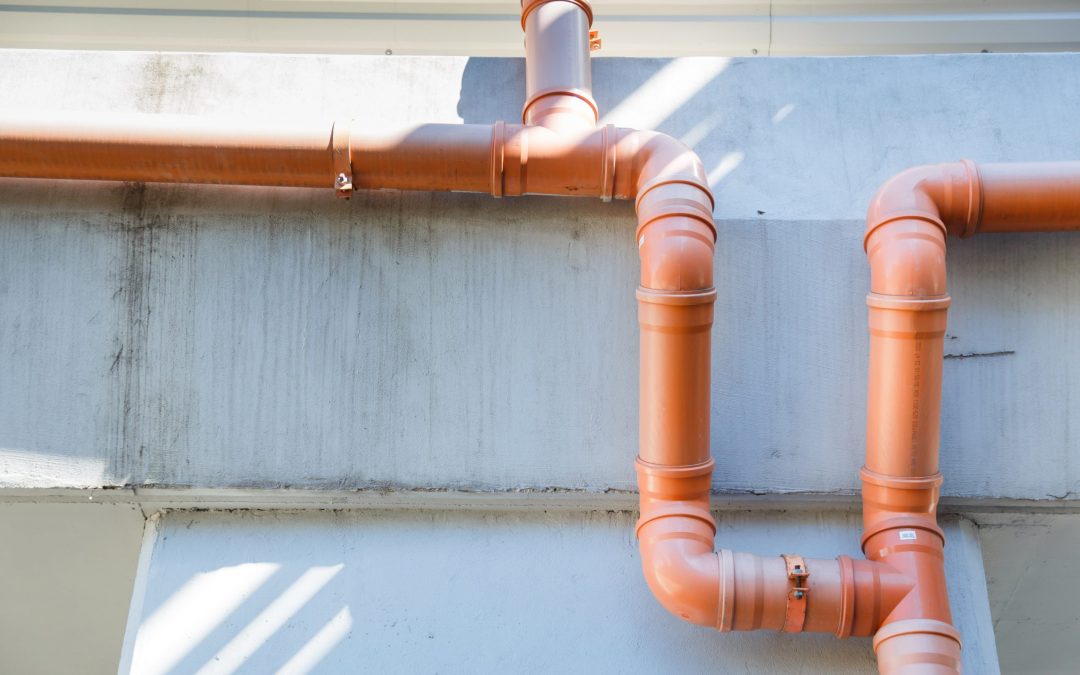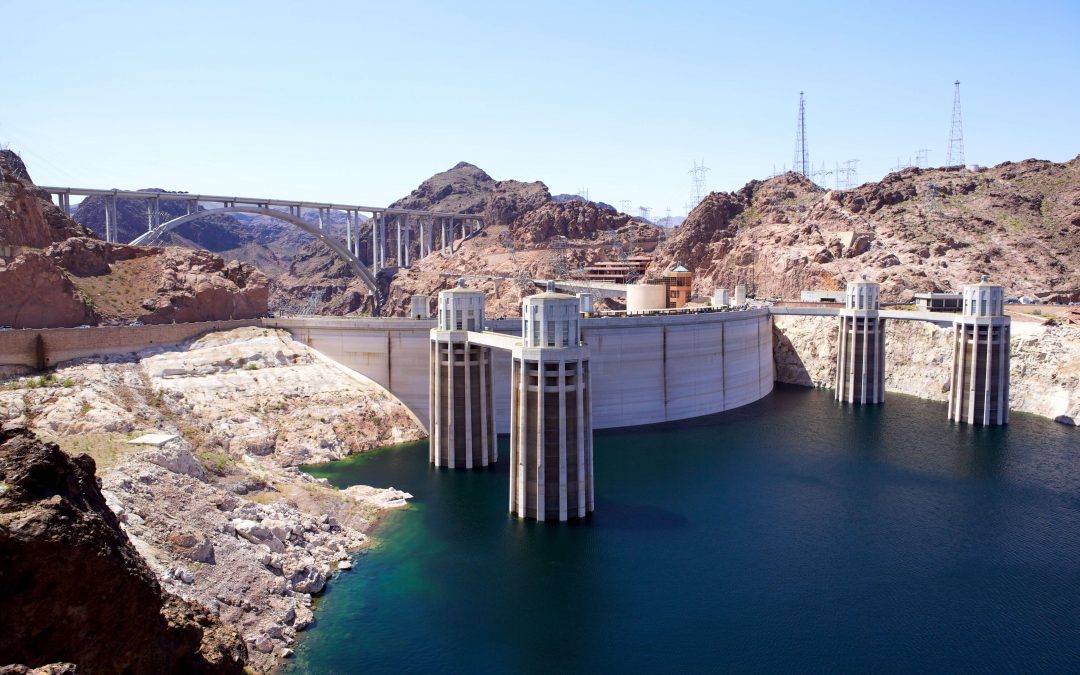
by simona | December 16, 2020 | International Water engineering degree
A dam is a barrier across a river to hold back river water for safe retention and storage of water or control the water flow. Dams divert the river flows into a pipeline, a canal or a channel. Dams result in substantially raising water levels in the river over a large area, creating storage space. Here are some of the purposes of dams.
Dams for the purpose of irrigation
Half of the world’s large dams are exclusively or primarily for irrigation. The majority of dams are multipurpose in nature, but irrigation is the largest user of the waters withdrawn. Dams enable harnessing of large water resources, to meet the needs of fast-growing societies.
Dams for the purpose of hydropower
A dam stops the flow of the river and causes the water level to rise. The higher water level then allows for harvesting the energy through the falling of that water. The reservoir the dam creates acts as stored energy. Water then flows from high to low through turbines within the dam. The water spins the turbines which are connected to a generator to turn the rotor which then creates the electric power.
Dams for storage of water
Not all the water stored behind dams is withdrawn for use. Storage provides insurance against uncertainty due to climatic variability. Furthermore, it can help reduce variability in season’ slow flows in rivers and save societies from economic upheavals and losses due to flood and drought.
Dams for flood control
The water level of a reservoir needs to be below a certain level before the onset of the monsoon season. This is so that when the monsoon rains come, there is space to store the excess rainwater. Additionally, water can be released in a regulated manner, thus preventing floods downstream when there is heavy inflow to the dams. Purposes of dams for flood control impound floodwaters and then either release them under control to the river below the dam or store or divert the water for other uses.
Multipurpose dams
Storage that serves the need for irrigation, domestic and industrial water supply, power generation and recreation can be more efficient and cost-effective than storage serving single purposes. But multipurpose dams also have some disadvantages. Different uses of water have different and sometimes conflicting requirements in terms of storage, use and releases.
Thanks for taking the time to read our blog post the purposes of dams. Do you want to study abroad in Spain? Take a look at our Water engineering study programme and feel free to talk to our counsellor for more information.

by simona | August 4, 2020 | International Water engineering degree
Wastewater is used water. It includes substances such as human waste, food scraps, oils, soaps and chemicals. In homes, this includes water from sinks, showers, bathtubs, toilets, washing machines and dishwashers.
What is wastewater?
If the term ‘wastewater treatment’ sounds confusing, you might think of it as ‘sewage treatment’. Much of the water that people, industries and business use need to undergo treatment before we can release it back to the environment.
Nature has an amazing ability to handle small amounts of water wastes and pollution but it would be overwhelming if we did not treat the billions of litres of wastewater and sewage produced every day. Treatment plants reduce pollutants in wastewater to a level nature can handle.
Wastewater also includes storm runoff. Although some people assume that the rain that runs down the street during a storm is fairly clean, it is not. Harmful substances that wash off roads, parking lots and rooftops can harm our rivers and lakes.
Why treat wastewater?
Treating wastewater is a matter of carrying for our environment and for our own health. There are a lot of good reasons why keeping our water clean is important.
FISHERIES: Clean water is critical to plants and animals that live in water. This is important to the fishing industry, sport fishing enthusiasts and future generations.
WILDLIFE HABITATS: Our rivers and ocean waters teem with life that depends on shoreline, beaches and marshes. They are critical habitats for hundreds of species of fish and other aquatic life. Migratory water birds use the areas for resting and feeding.
RECREATION AND QUALITY OF LIFE: Water is a great playground for us all. The scenic and recreational values of our waters are reasons many people choose to live where they do. Visitors enjoy water activities such as swimming, fishing, boating and picnicking.
HEALTH CONCERNS: If it is not properly cleaned, water can carry disease. Since we live, work and play so close to water, harmful bacteria have to be removed to make water safe.
Effects of wastewater pollutants
If we don’t properly treat wastewater, it can have a negative impact on the environment and our health.
- Decaying organic matter and debris can use up the dissolved oxygen in a lake so fish and other aquatic biotas cannot survive;
- Excessive nutrients, such as phosphorus and nitrogen (including ammonia), can cause eutrophication or over-fertilization of receiving waters, which can be toxic to aquatic organisms, promote excessive plant growth, reduce available oxygen, harm spawning grounds, alter habitat and lead to a decline in certain species;
- Chlorine compounds and inorganic chloramines can be toxic to aquatic invertebrates, algae and fish;
- Bacteria, viruses and disease-causing pathogens can pollute beaches and contaminate shellfish populations, leading to restrictions on human recreation, drinking water consumption and shellfish consumption;
- Metals, such as mercury, lead, cadmium, chromium and arsenic can have acute and chronic toxic effects on species;
- Other substances such as some pharmaceutical and personal care products, primarily entering the environment in wastewater effluents, may also pose threats to human health, aquatic life and wildlife.
Wastewater treatment
The major aim of wastewater treatment is to remove as much of the suspended solids as possible before the remaining water (effluent) goes back to the environment. As solid material decays, it uses up oxygen, which plants and animals living in the water need.
“Primary treatment” removes about 60 per cent of suspended solids from wastewater. This treatment also involves aerating (stirring up) the wastewater, to put oxygen back in. Secondary treatment removes at least 85 per cent of suspended solids.
Thanks for taking the time to read our blog post about wastewater treatment. Do you want to study abroad in Spain? Take a look at our Water engineering study programme and feel free to talk to our counsellor for more information.

by simona | March 30, 2020 | International Water engineering degree
Choosing the right water drainage system can be difficult as not all systems are equal. And although there are a number of options on the market, each property has its own unique requirements.
The local environment
Some surface water drainage systems aren’t designed for all climates and weather conditions. When you’re choosing a surface water drainage system you should take into account how the surrounding environment will affect installation, effectiveness and longevity.
Rainfall
Rainfall is the biggest factor in assessing the effectiveness of any surface water drainage system. Annual rainfall levels, frequency, and the likelihood of large deluges or steady amounts spread over the year are important factors. Not only will these affect the capacity of the system, they will also influence installation factors.
Important factors include:
- The width of PVC piping for additional drainage
- The fall of the drainage system over its total area
- Placement on the surface
Debris
Some surface water drainage systems handle debris better than others. If you are installing the system in an area surrounded by trees, long grass, or soil debris, you have to ensure that during high levels of rainfall your system is not overwhelmed by debris. Most good systems come with attachments and other measures. This includes gratings or leaf baskets to reduce the amount of debris that enters them while still maintaining maximum drainage capacity. Choose a system that provides additional barrier against debris.
Soil type
The soil surrounding your surface water drainage system can play havoc with its effectiveness and lifetime if not correctly accounted for. Make sure you understand the soil type, how much it is likely to shift, contract or expand in different weather conditions, and install the system in a way that is flexible and works in all conditions.
Price and quality
Price is naturally going to be a factor. However, you should aim for the best combination of quality and price that is within your budget. Systems can vary widely in price. This depends on the brand, the number of attachments and sustainability for the area the system needs to cover.
Installation area
The area that you need covered by the surface water drainage system will play a part in the decision. If it is a large area with decent natural drainage you may be comfortable for a cheaper system or one with reduced capacity. Alternatively, in a tight area that is likely to pool water in the event of a downpour, you will definitely be aiming for something with decent capacity, possibly at the higher end of the price range.
Do you want to know more about our Water engineering study programme? Talk to our counsellor to get more information.

by simona | February 28, 2019 | International Water engineering degree
A career as a water engineer may appeal to you if you’re keen to solving problems. Problems such as global warming, ageing infrastructure, population growth and quality of living standards. Water engineers specialise in water-based projects. In this blog post we’ll be focusing on the career benefits of pursuing a degree in Water engineering.
High-demand job
One of the biggest career benefits to water engineering is the high demand. Specifically, the number of open positions for Water Engineers will grow 20% in the next 10 years. That’s faster than average. In fact, infrastructures are constantly aging, requiring repair and rebuilding. In addition, a growing population and continual strain placed on our water resources will demand more water engineers to create new and more efficient systems.
Project planning knowledge
Planning and management issues are rarely simple in the field of water engineering. Therefore, projects focused on addressing and finding solutions to these issues are also rarely simple. In particular, these projects need planning and execution in ways that will maximise their likelihood of success. They need to lead to useful results. When decision-makers and other stakeholders disagree over what they want, and what they consider useful and helpful, you can be the one to say the final word. With enough experience, of course.
Problem-solving abilities
Problem solving in a practical setting requires more than analytical skills alone. Being for some time in this field, you’ll be able to understand what is necessary to define the problem. Furthermore, creativity and innovation are both required in generating alternative solutions. Analytical techniques must be applied to study feasibility and to obtain the optimum or ‘best’ solution. You will advance your engineering skills and become a capable, confident problem solver. You’ll do so by learning the wide array of tools, processes, and tactics employed in the field.
Higher salary
As mentioned earlier, being a water engineering is a high-demand job and it comes with a higher average salary.
Field work
Last but not least, one of the career benefits to water engineering is the field work. Water engineers spend part of the work day at construction sites, thus overseeing the construction of their designs. As a result, the nature of the work keeps water engineers active and on the move. The job is dynamic, which means each project has its on distinct design challenges and operational issues. Some water engineers choose to travel abroad to participate in large engineering projects.
Problems associated with water resources, access, distribution and quality are amongst the most important global issues in this century. Water quality and scarcity issues are worsened by rising populations, economic growth and climate change. Do you want to know more about our Water engineering study programme? Talk to our counsellor to get more information.





Recent Comments